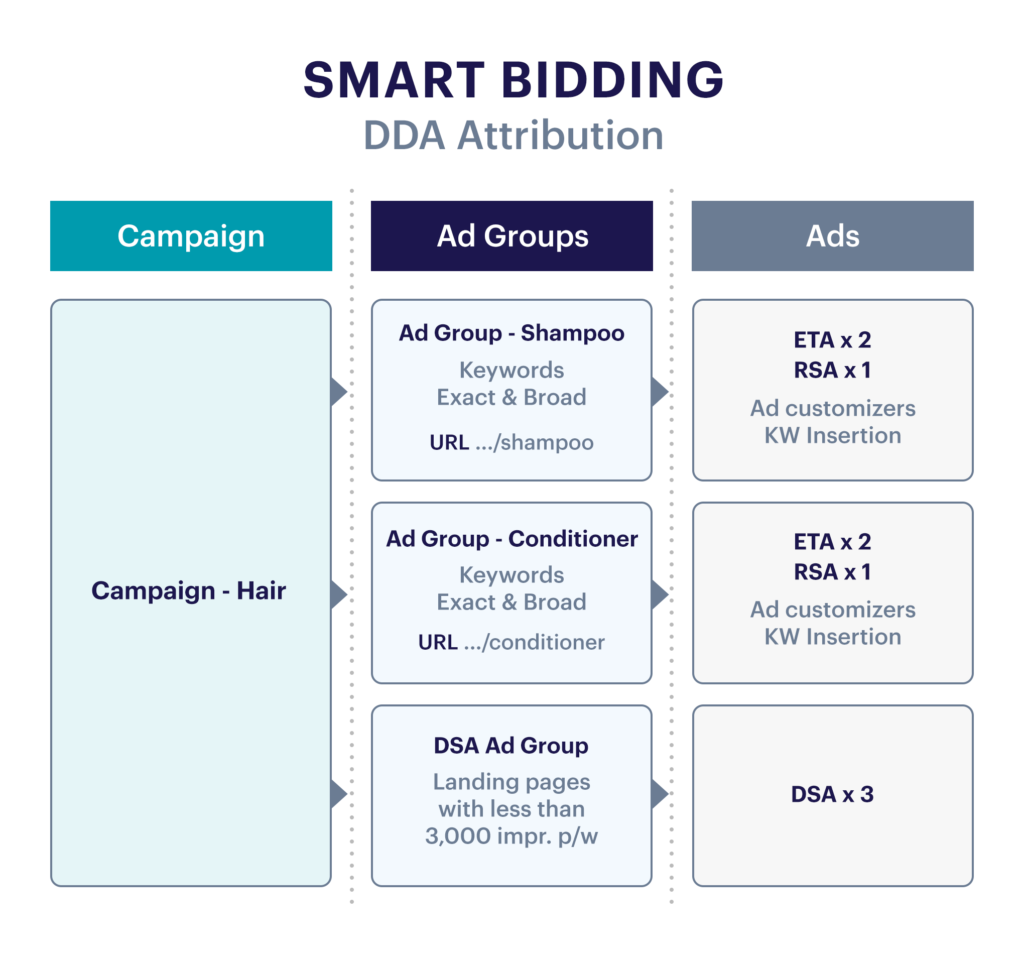Embracing Automation With The Hagakure Google Ads Search Structure

With recent changes to keyword match types, less visibility of search terms and the ever-growing development of automation, is it time to rethink how we structure search accounts?
In this blog, I explore the Hagakure Structure for Google Ads and whether it’s worth incorporating into your current PPC strategy.
A quick history of Hagakure
In Japanese, Hagakure represents a practical and spiritual guide for a Samurai warrior.
The identity and structure of what made up a Samurai shifted over the seven centuries they dominated Japan. Of course, there were commonalities but how one must conduct themselves changed over the ages.
During the Edo period where Samurais transitioned into a time of peace many began to lose their sense of what it meant to be a Samurai.
Hagakure gave them a clearer view of what Samurai believed and how they should live their lives.
Okay, but how does this relate to Paid Search?
I know what you’ll be thinking: how does the history of Samurais relate to digital marketing?
Well, I’m sure all paid search account managers can relate to the theme of change with the continuous updates and changes to best practice, even within the past few years!
With recent keyword match type updates, PPC Samurais may be searching for guidance on how best to structure accounts in the age of automation.
In the context of digital marketing, Hagakure is a guide on how to simplify your Google ads account with a new search structure underpinned by automation features such as bid strategies and Dynamic Search Ads (DSAs).
The structure aims to simplify campaigns to maximise the data available to make the most of the ever-advancing automation features available to advertisers in order to maximise results.
How does Google Ads Hagakure structure work?
Hagakure consists of DSAs and broad keywords combined with automated bidding and ad customizers.
Campaigns have broad category themes such as hair products and ad groups are structured by URL’s rather than keyword groups with the recommendation that the URL has at least 3,000 impressions per week.
This is to ensure the bid strategy has enough data to optimise with.

Marketers should prioritise broad match type to reach the minimum impression threshold. You no longer split ad groups or campaigns by match type – as part of the new match type roll out Google claims the search term would match to exact match keyword first automatically and so on.
DSA ad groups will then capture any remaining traffic where the URL falls below the threshold.
Best practices for your structure
If that’s piqued your interest so far, here are my top tips to ensure best practice when setting up your Hagakure structure for Google Ads:
- Have 3 DSA ads per DSA ad group and 2 ETAs & 1 RSA in each standard ad group
- Utilise ad customizers and IF functions to tailor ad copy
- Each ad group (URL) should have a minimum of 3,000 impressions per week
- Overlay Google audience lists
- Adopt data-driven attribution
Benefits of the Hagakure structure
- Account managers can focus efforts on the wider strategy, maturity and growth as the structure saves time on tasks such as ad copywriting, keyword generation and bid optimisations.
- The structure allows for quicker campaign builds meaning you can scale your activity with speed and ensure you can react fast to market changes.
- The simplification of the account makes reporting and data analysis less complex. The increased volume of data allows algorithms to learn faster and test results to reach statistical significance faster.
- It can enhance user journeys as DSAs take people to the most relevant landing page based on their search which can help improve CvR.
- Keyword match type changes opens the floor to trying something new for many advertisers who previously relied on this as part of their structure.
- Automation will shape the future of paid search so utilising the ever-improving features creates a future-proof structure.
3 things to consider before adopting Hagakure
- Using DSA’s means the URL’s will need to be refreshed manually to ensure any page that falls below the 3,000 impression threshold is included / if new products or pages are added to site.
- DSAs work best when you have good SEO as the dynamic headlines are often pulled from the meta tags in the html. It is possible now to see what headline served for the search term so make sure to keep an eye on this report to ensure appropriate ads are being shown.
- This structure will take some time to learn and optimise so a period of shaky performance should be expected.
Our thoughts
The Hagakure structure has the potential to drive great results.
With recent changes to Google keyword match types, we have been testing out broad keywords. In one of our client accounts we utilise broad match keywords in combination with a target CPA bid strategy to drive 92% of the conversions at a 10% lower CPA than other match types.
Updates to DSAs – such as the ability to view the dynamic headlines that have been served against the search terms – helps advertisers grow confidence in their automation capabilities.
From what we’ve found when using product page URL’s the machine learning is doing a good job at dynamically generating the headline and directing users to the best URL.
What’s next?
So there you have it, a run down of the Hagakure structure for Google Ads. If you’re looking to dip your toe in the water, my advice is to test it out.
There is no one-size-fits-all in terms of account structure, so the best way to get started is to just run a test campaign. But remember to allow sufficient time for the bidding algorithm to kick in before analysing results.
Good luck!
Need some help or advice?
Get in touch with our Paid Media experts today.
Own your marketing data & simplify your tech stack.
Have you read?
Chrome’s announcement on dropping cookie opt-in last month closed the door on a 5 year saga for marketers. But what is the landscape like in 2025 for cookie-based measurement?
Generative AI is transforming the way that marketers plan and assemble content for their Paid Ads. As big platforms like Google, Meta and TikTok increasingly build the tools needed to...
In a surprising move that has sparked heated debate, Mark Zuckerberg announced on his Instagram that Meta will be reducing its levels of censorship and in particular fact-checking on its...



